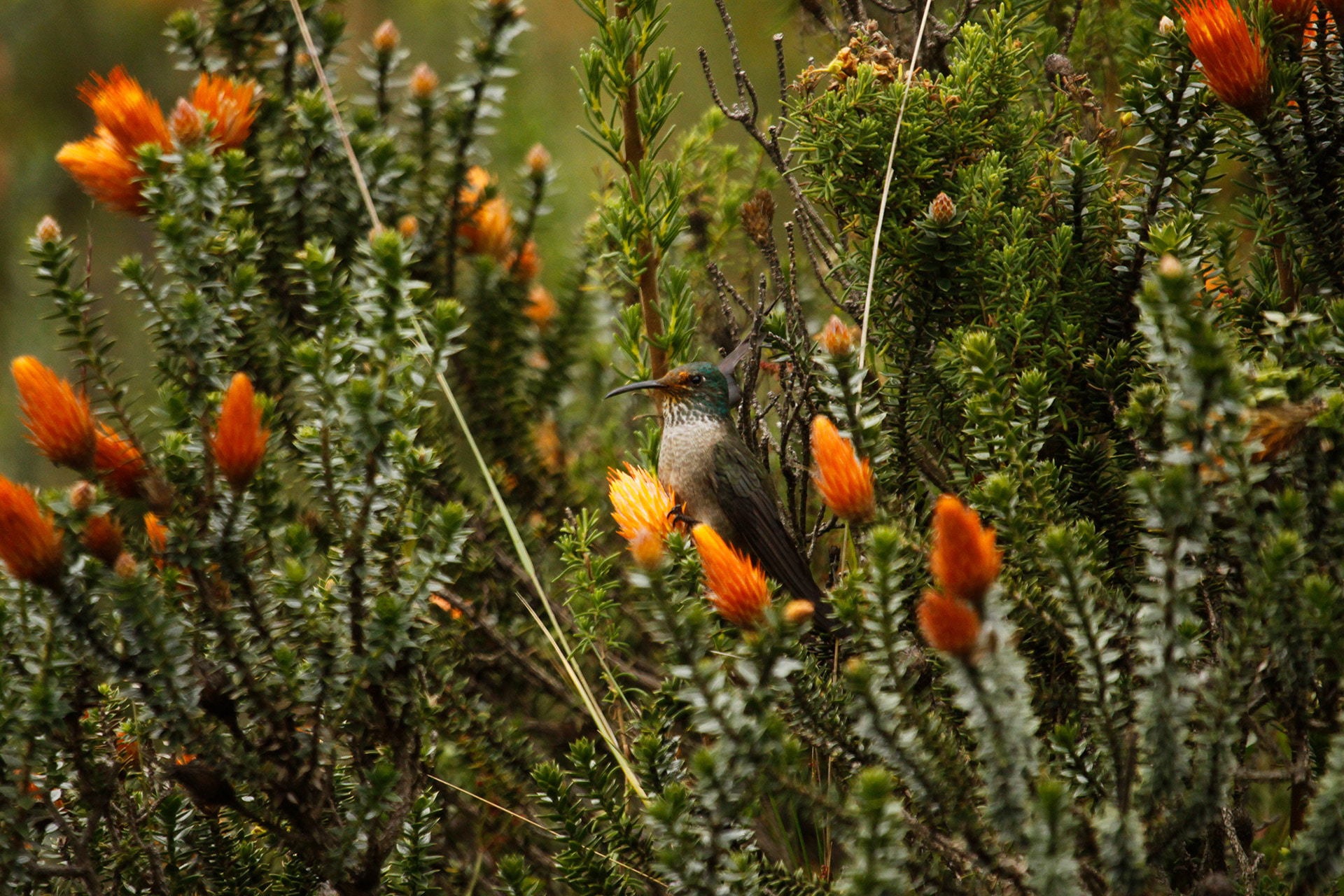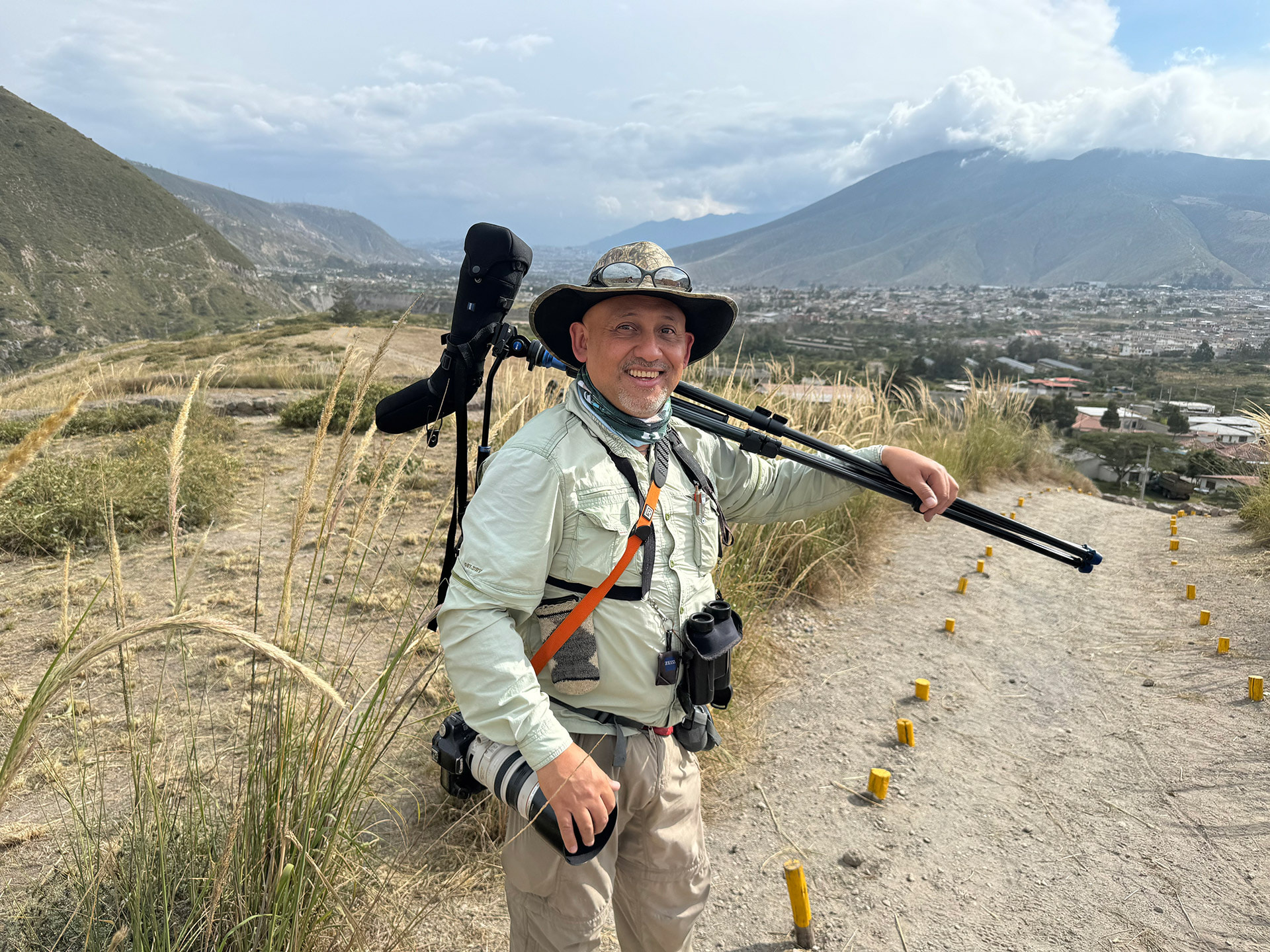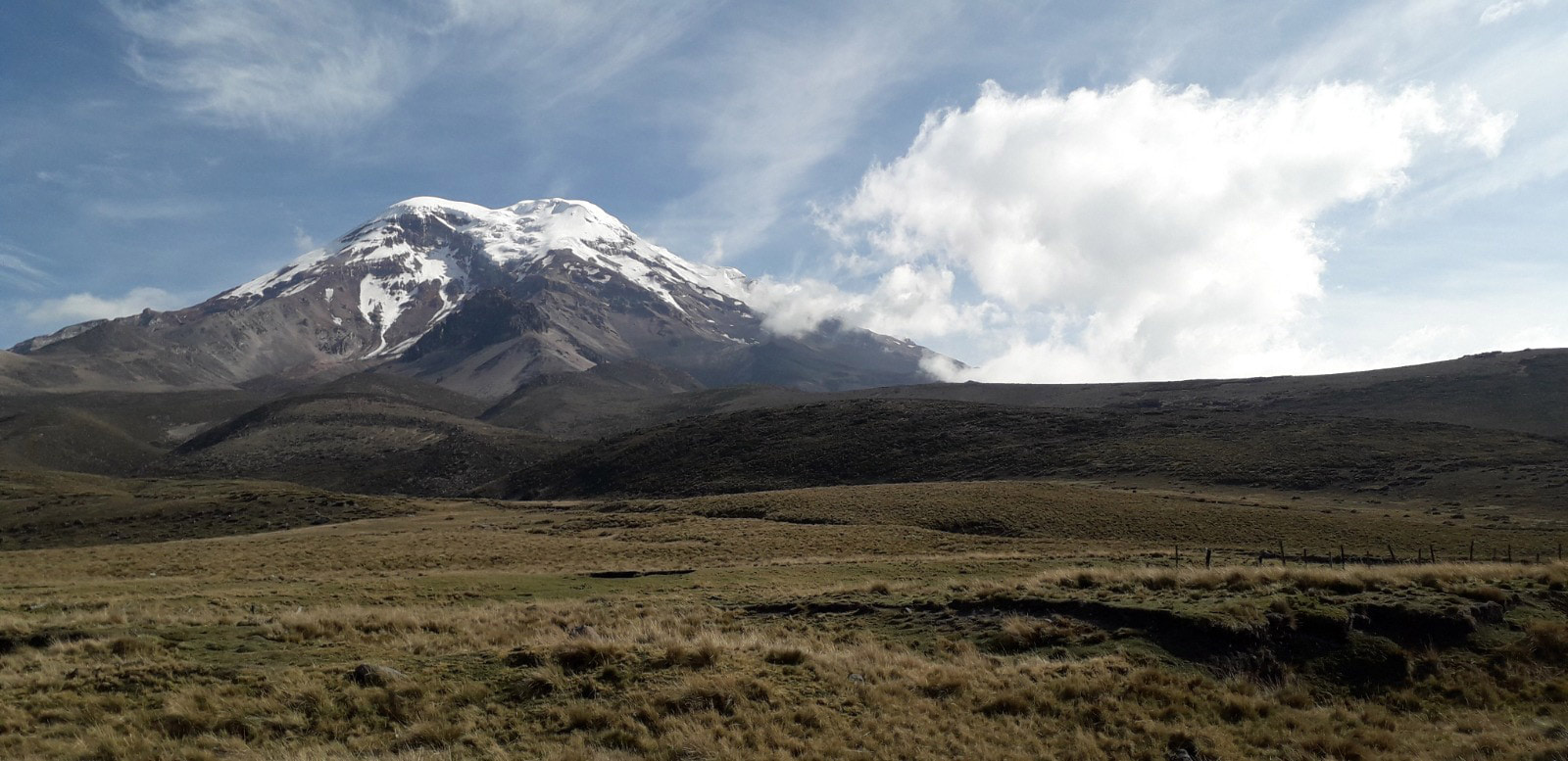
BGSU scientists make international headlines with first-of-its-kind research into hummingbirds
Estimated Reading Time:
Research from Gustavo Cañas-Valle ’24 and Dr. Juan Bouzat found Chimborazo Hillstar hummingbirds living together in the Andes Mountains
Research performed within the Department of Biological Sciences at Bowling Green State University has sent shockwaves through the bird-watching world by discovering an atypical behavior for a hummingbird species native to the Andes Mountains.
Hummingbirds are often highly aggressive and territorial, but in one of the toughest terrains in the world, a species of hummingbird is living cohesively with its peers.
At first, BGSU alumnus Gustavo Cañas-Valle ’24, an ornithologist, said he couldn’t quite believe what he was seeing: Chimborazo Hillstar hummingbirds in his native Ecuador were not fighting over nesting territories, but actively sharing them.
“It was mind-boggling,” he said. “The context of my experience showed me the same background most people have in their mind: I knew hummingbirds were usually very aggressive to each other, so finding them nesting in the same location was amazing.
“Then I realized that males and non-reproductive females were also roosting in the same space as reproductive females, and that goes way beyond normal biological phenomenon. Most colonies of birds tend to have reproductive females, but rarely non-reproductive females.”
When he reported back to Dr. Juan Bouzat, an evolutionary biologist and professor at BGSU, Bouzat was skeptical.
Many bird species are colonial, but most hummingbird species are the polar opposite – they usually forage individually, compete for territory and their females tend to nest solitarily.
“Hummingbirds are not a species like penguins where you see hundreds of them together,” Bouzat said. “These are hummingbirds that live in the High Andes, above 10,000 feet, in a very, very harsh environment above the tree line.
“As evolutionary biologists, we are always asking why a particular species behaves in a particular way. So we ask ourselves, ‘How can we explain this?’”
The finding that a species of hummingbird appears to form social groups is a major one, and the research has drawn worldwide interest from the New York Times to the CBC radio in Canada to Spanish-language media outlets in Ecuador and Colombia.

As Cañas-Valle and Bouzat completed their research, which was published in a leading journal, Ornithology, they sought a means of testing whether Chimborazo Hillstar hummingbirds were simply nesting together due to a lack of sites away from predators and the tough environmental conditions of the High Andes.
“The first intuition was to say there might not be enough space – the landscape doesn’t offer them suitable locations to nest in safe, protected places,” Bouzat said. “Thus, we surveyed the landscape for potential sites that would be appropriate for solitary nesting.”
Cañas-Valle studied the area, a large national park in Ecuador, and found potential sites for solitary nesting: ravines with culverts, concrete structures that allow for drainage to pass under roads.
The sites in which solitary nesting was possible gave Cañas-Valle and Bouzat a semi-natural experiment ground in which to test their hypothesis about the role environment plays in the hummingbird’s social groupings.
While some culverts had solitary nests, not all sites were used. More than 80% of active nests observed were present in colonies together with roosting individuals, likely the first ever documented example of colonial nesting and roosting by a species of hummingbird.
“Some culverts showed signs of past use, but were not being recurrently used across years as it happens with most birds, which was very strange,” Cañas-Valle said. “If our hypothesis that the hummingbirds are getting together because of reduced availability of nesting sites was correct, then every site available for solitary nesting should be used. But that didn’t happen – many culverts were not used.”
The finding suggested that Chimborazo Hillstar hummingbirds likely evolved to be colonial for other reasons.
Similar to other social species, these particular hummingbirds likely gain something by being part of a group.
“In evolutionary biology, reproductive success is the currency for adaptive evolution. Colonies typically evolve over a long time and become socially cohesive, in some cases leading to complex cooperation among individuals,” Bouzat said. “Somehow, they get a benefit – increasing their reproductive success – from being associated with the social group.”
Preliminary observations suggest that Chimborazo Hillstar colonies may have evolved social adaptive traits. As Cañas-Valle watched the hummingbirds leave their colonies, he compared it to a sporting event in which players are introduced one at a time.
About 80% of the birds went in the same direction, he said.
“There is a theory of information exchange as one of the potential explanations for coloniality,” he said. “This is only speculation right now, but hummingbirds may get easier access to mates and food resources by an exchange of information between members of a colony. Those are the two most important things the hummingbirds gain, with also gaining a safe place to sleep that is slightly away from the harsh winds of the Chimborazo volcano region.”

As a graduate student, Cañas-Valle said Bowling Green became a home for him. He completed his master’s in biological sciences under the mentorship of Bouzat, who he considered an invaluable resource during the course of his research.
“I think he was caring, informed and a strict scientist, in that order,” Cañas-Valle said. “Juan is well-known as a conservation geneticist, and he’s also a deep thinker. He was all-in supporting me as a graduate student.”
Prior to the paper being accepted for publication in a leading journal, Cañas-Valle joked that Bouzat, his advisor at BGSU, was the toughest one to convince that the hummingbirds were living in a colony.
But after years of work, the pair compiled research that added a new understanding about the evolution of coloniality and hummingbirds.
“It took me probably two years for Juan to say, ‘Well, Gustavo, you convinced me. We can call this gathering of nests a colony from now on,’” he said. “I was thinking,’ Finally.’ That was a priceless moment.”
Related Stories
Media Contact | Michael Bratton | mbratto@bgsu.edu | 419-372-6349
Updated: 03/04/2025 09:44AM




